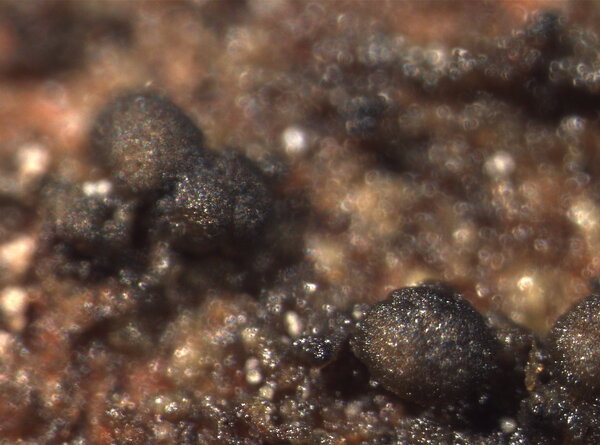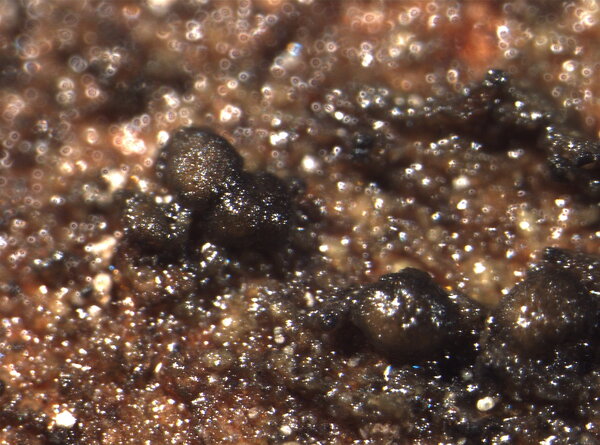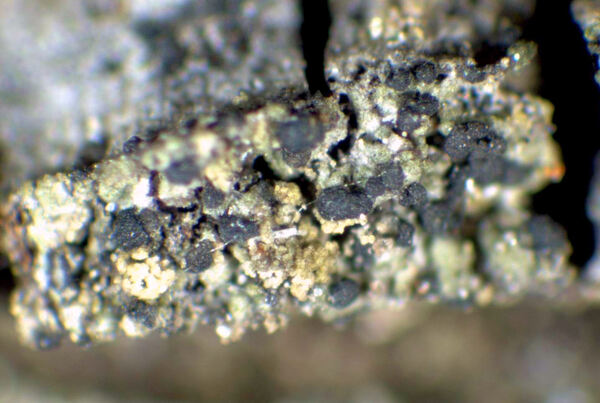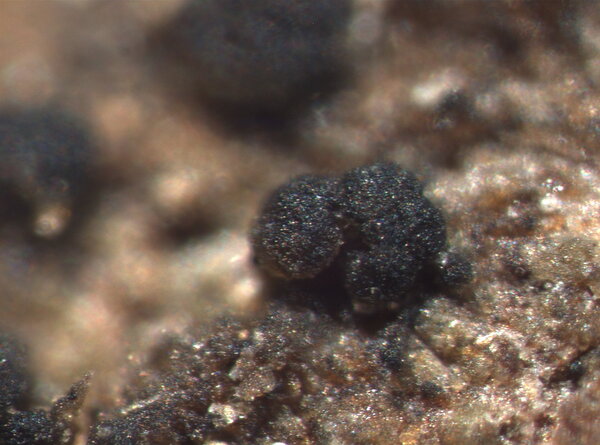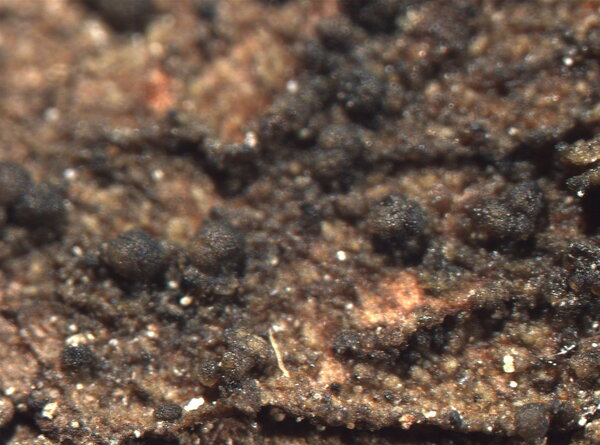Micarea globulosella (Nyl.) Coppins
Bull. Brit. Mus. Nat. Hist., Bot. ser., 11: 134, 1983. Basionym: Lecidea globulosella Nyl. - Lich. Jap.: 69, 1890.
Synonyms: Bacidia globulosella (Nyl.) Zahlbr.; Micarea bacidiella sensu Vězda & V. Wirth
Distribution: N - Frl, Piem (TSB 34003). C - Tosc (Benesperi & al. 2007), Mol (Nimis & Tretiach 1999), Abr (Nascimbene & al. 2021). S - Camp (Aprile & al. 2003b), Pugl (Nimis & Tretiach 1999).
Description: Thallus crustose, episubstratic, usually composed of convex, white to pale grey-green, smooth, ecorticate areoles sometimes reacting K+ faintly violet. Apothecia micareoid, sessile, 0.1-0.3 mm across, with a grey to brown-black (pale grey to whitish in shade-forms), strongly convex, sometimes tuberculate, epruinose disc, without a proper margin. Proper exciple indistinct: epithecium grey-green, K+ violet; hymenium pale olive-green or olive-brown, 35-40 µm high, C+ pink; paraphyses numerous, branched and anastomosing, c. 1 µm thick at mid-level, sometimes widening to 1.5 µm at tips; hypothecium colourless, 50-70 µm high. Asci 8-spored, clavate to cylindrical-clavate, with an unstained wall and a K/I+ blue outer layer and apical dome, the latter with a non-amyloid, cylindrical axial mass. Ascospores 0-3(-6)-septate, bacilliform to almost needle-like 13-26 x 1.5-2.5(-3) µm. Pycnidia immersed to emergent, whitish to dark grey, the wall with a greenish, K+ violet pigment. Conidia of two types: a) mesoconidia, simple, 3.6-5.3 x 1-1.5 µm, extruded as a white mass from the ostiole; b) microconidia, simple, 3.8-5 x 0.8-1 µm. Photobiont micareoid, thin-walled, the cells 4-7 μm wide. Spot tests: thallus, apothecial and pycnidial sections K- or K+ violet, C+ red, KC+ red, P- (reactions best visible under the microscope). Chemistry: gyrophoric acid.Note: a temperate to probably circumboreal-montane species found on bark of conifers and oaks in humid forests, more rarely on lignum; certainly more widespread in the Alps. It is included in the Italian red list of epiphytic lichens as “Data Deficient” (Nascimbene & al. 2013c).
Growth form: Crustose
Substrata: bark and lignum
Photobiont: green algae other than Trentepohlia
Reproductive strategy: mainly sexual
Most common in areas with a humid-warm climate (e.g. most of Tyrrenian Italy)
Commonnes-rarity: (info)
Alpine belt: absent
Subalpine belt: extremely rare
Oromediterranean belt: absent
Montane belt: extremely rare
Submediterranean belt: extremely rare
Padanian area: absent
Humid submediterranean belt: very rare
Humid mediterranean belt: absent
Dry mediterranean belt: absent
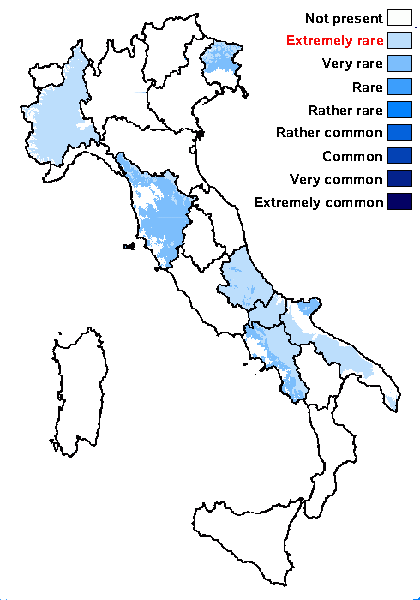
Predictive model
Herbarium samples
Growth form: Crustose
Substrata: bark and lignum
Photobiont: green algae other than Trentepohlia
Reproductive strategy: mainly sexual
Most common in areas with a humid-warm climate (e.g. most of Tyrrenian Italy)
Commonnes-rarity: (info)
Alpine belt: absent
Subalpine belt: extremely rare
Oromediterranean belt: absent
Montane belt: extremely rare
Submediterranean belt: extremely rare
Padanian area: absent
Humid submediterranean belt: very rare
Humid mediterranean belt: absent
Dry mediterranean belt: absent

Predictive model
| Herbarium samples |
 Index Fungorum
Index Fungorum
 GBIF
GBIF
